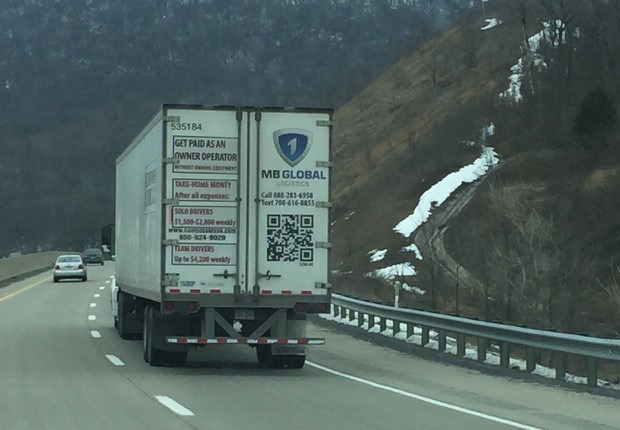When you are talking to clients about adding QR Codes, do you focus on the content, the marketing goals, and the mechanics, or do you talk about the placement, as well? Here’s the reality: If the QR Codes are in the wrong place, the marketing, content, and mechanics are irrelevant.
For me, this issue was top of mind today when I saw a tractor trailer ahead of me with a QR Code on the back. Intrigued, I took out my phone to scan it. After all, it said, “Scan me” underneath. The problem, as I discovered, was that I couldn’t get close enough to the truck for the camera to focus. The QR Code was huge, and common sense would have that I should be able to scan it easily, even from a distance. But this isn’t about common sense. It’s about optics. A phone camera doesn’t see things the way the eye does. Through the lens, the code was way too small, and the vibration in the car way too great. Despite multiple tries, the camera was not able to read the code. All I got was angry pixilation all over my screen.

Clearly, the creators of the code at least considered the challenges of scanning from a moving vehicle. That’s why the QR Code was so huge. The idea was on track, but it appears that nobody actually tested it. To know whether it would work, someone would have had to print out QR Code, put it on the back a tractor trailer, and then drive behind it at highway speeds to see if it worked. It doesn’t appear that anyone did that.
Here are some other examples of “What were they thinking?” placements of QR Codes:
- On automatic doors that open any time someone gets close enough to scan them.
- At underground subway stops where there is no cell service.
- On airplanes where cell service is not allowed.
- Behind towel racks and stability bars in bathrooms where the bar obscures the codes.
- On the inside edge of magazine pages where the codes get buried in the gutter.
- On the opposite side of the tracks in a subway station where you have to climb over the tracks to scan them. (Mashable jokes: “Simply climb down onto the tracks, carefully step over the third rail… Now, launch your QR scanner and… TRAIN!")
- 100+ feet high on a billboard on the side of the building where you cannot get the right angle to scan thems.
- On straws.
- On trade show displays where they are broken into multiple pieces so they wills bend around a curve.
- In emails, where most people read them . . . on their phones. (Can’t scan a QR Code with your phone when it’s on your phone.)
The takeaway? Encourage your clients to really think about the “where,” not just the “what.” Of course it’s make or break to know what marketing goal the codes are intended to accomplish and what content to use on the back end to do it. But if the target audience cannot scan the codes in the first place, then your clients won’t get off the starting block.
Think before you place!














